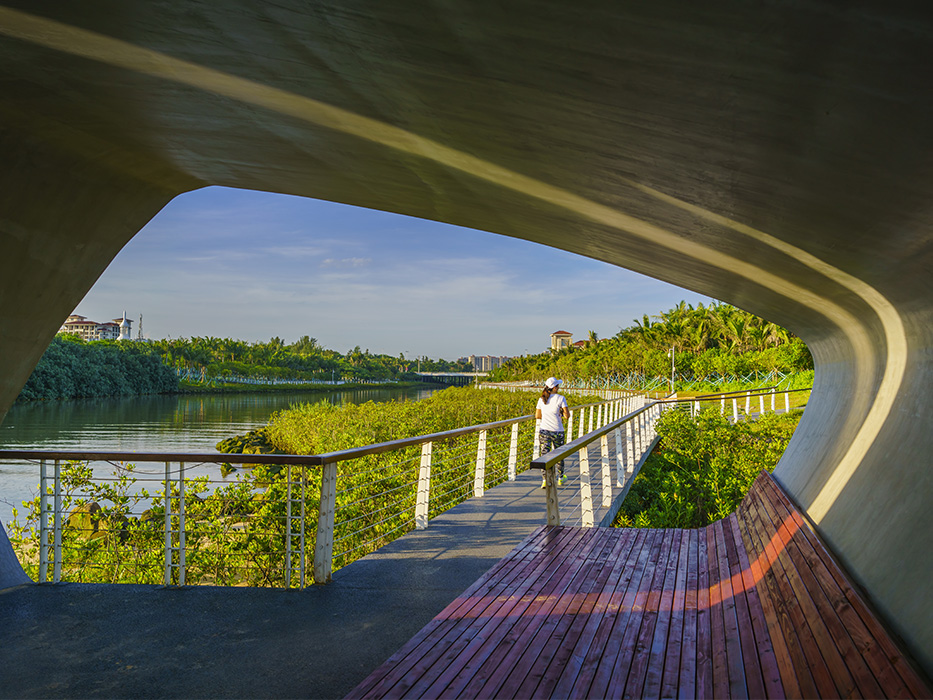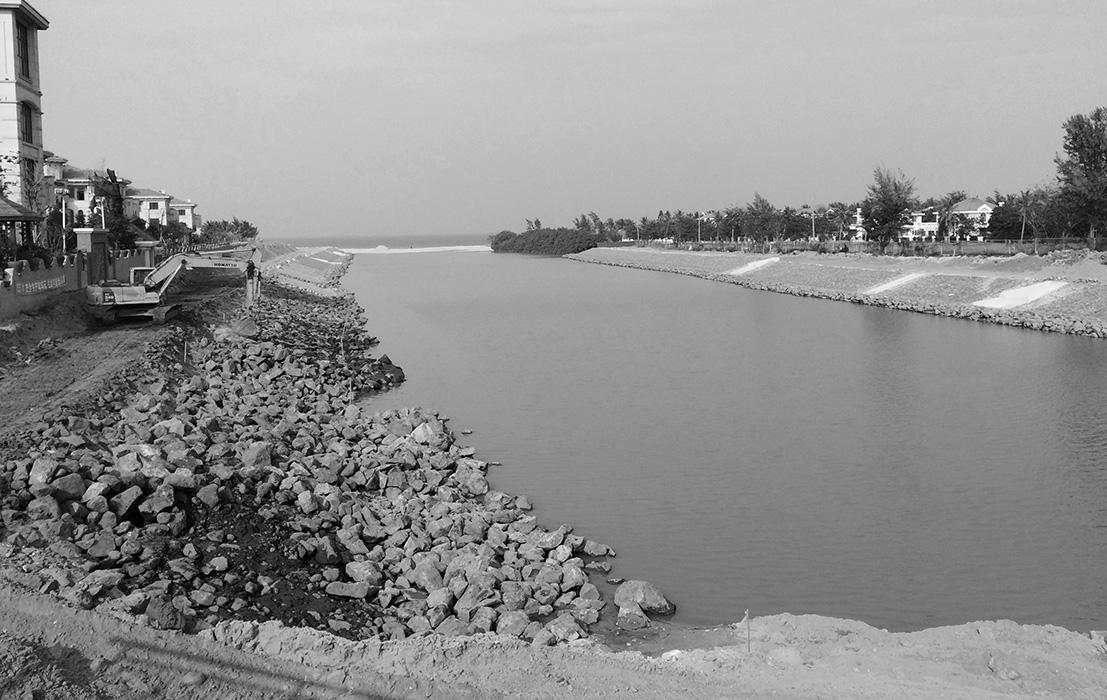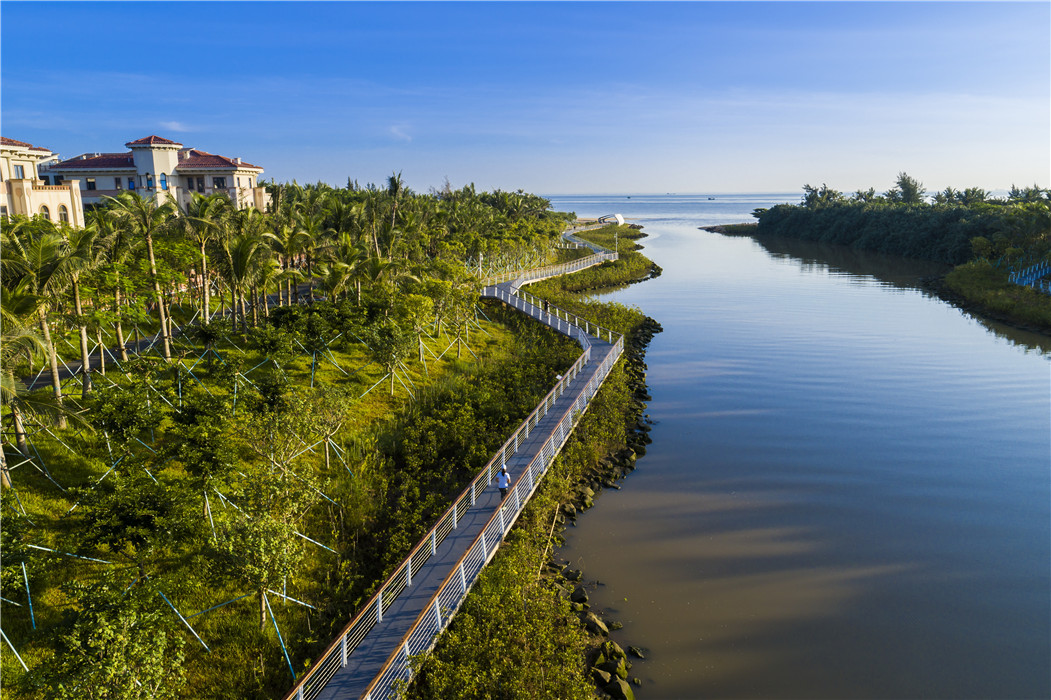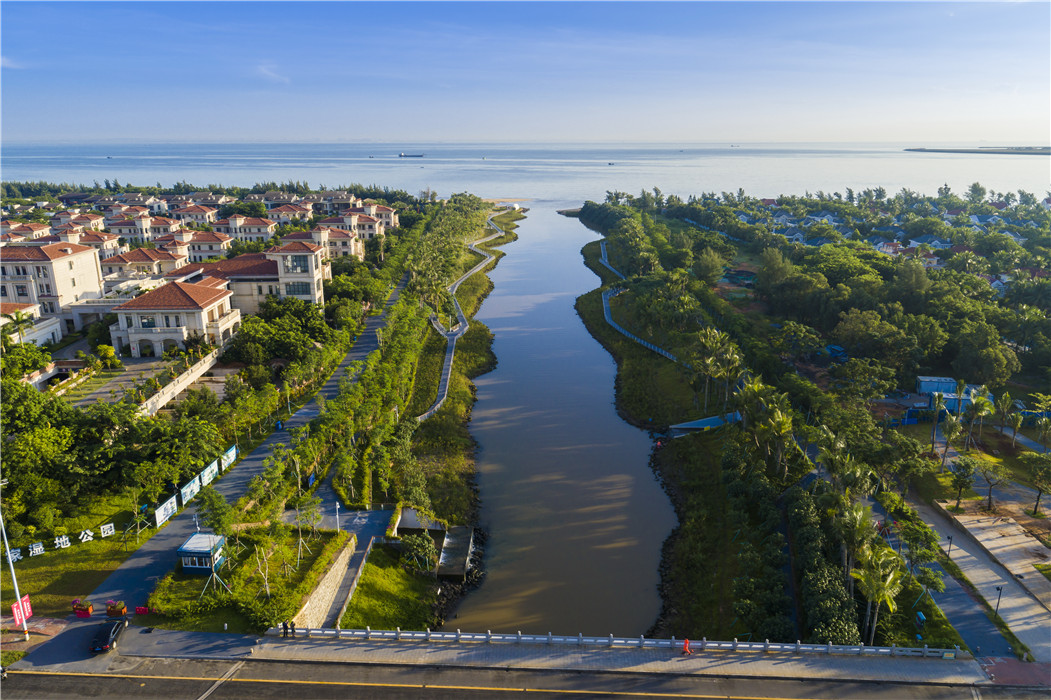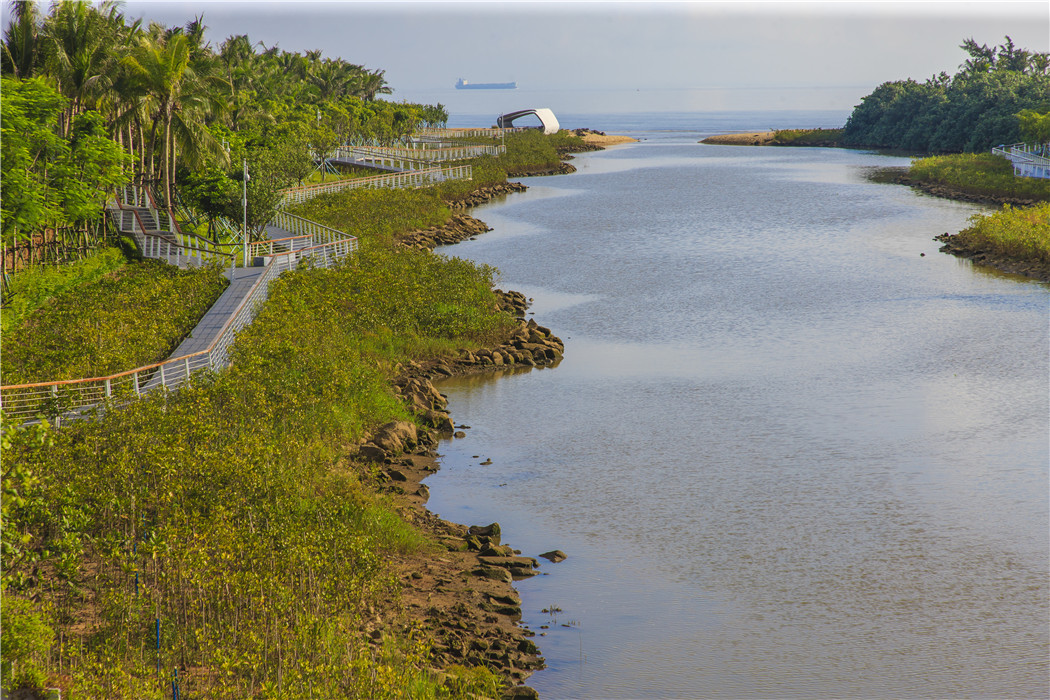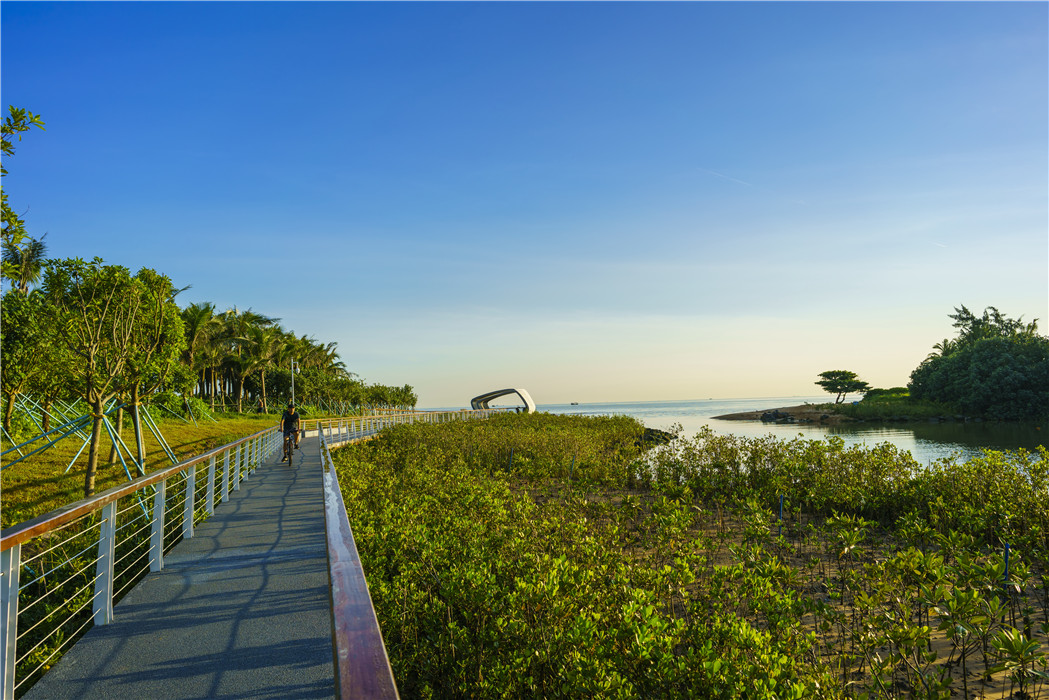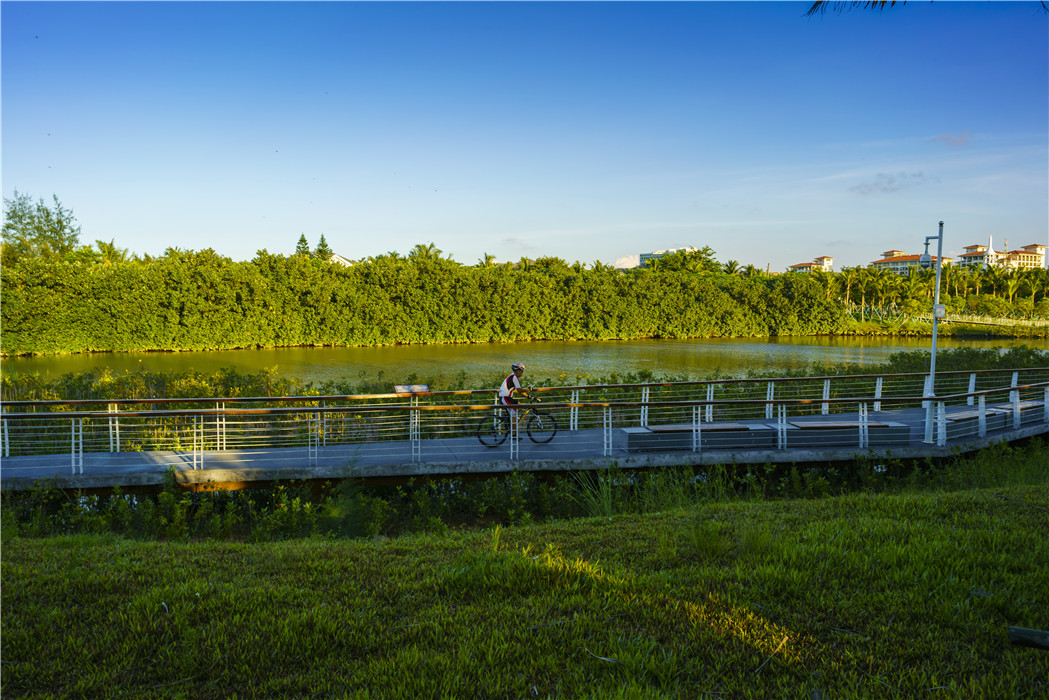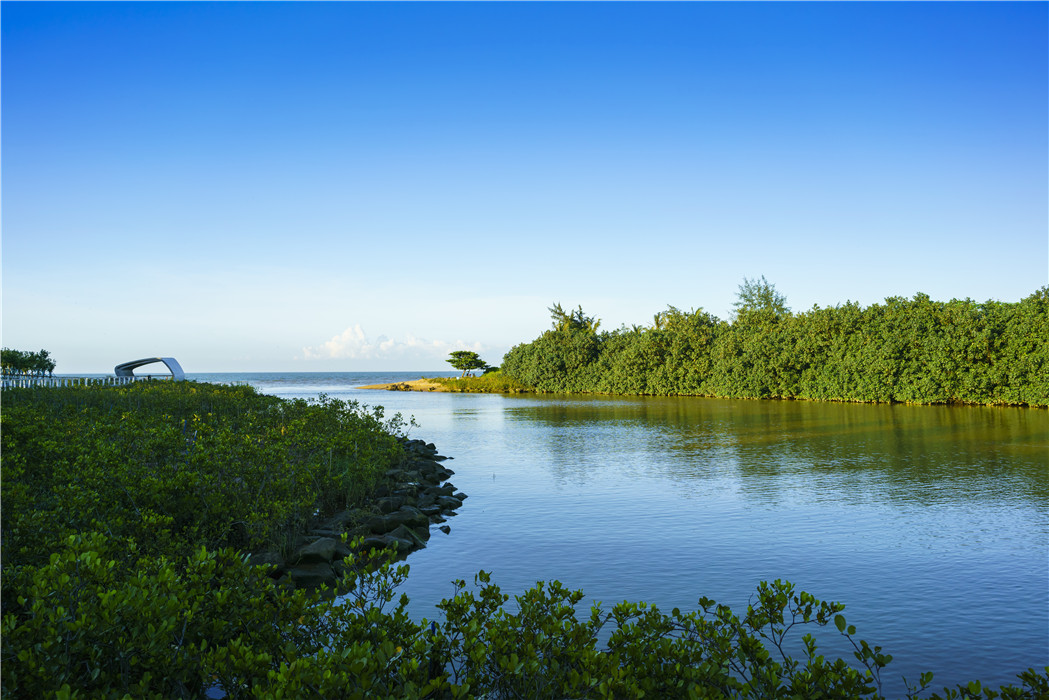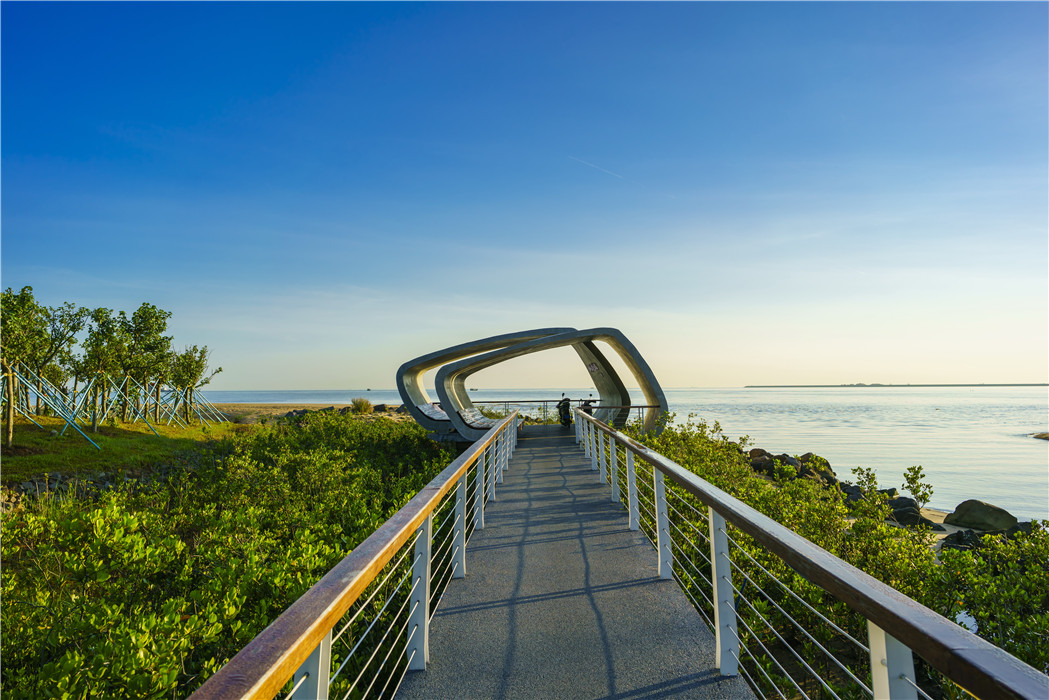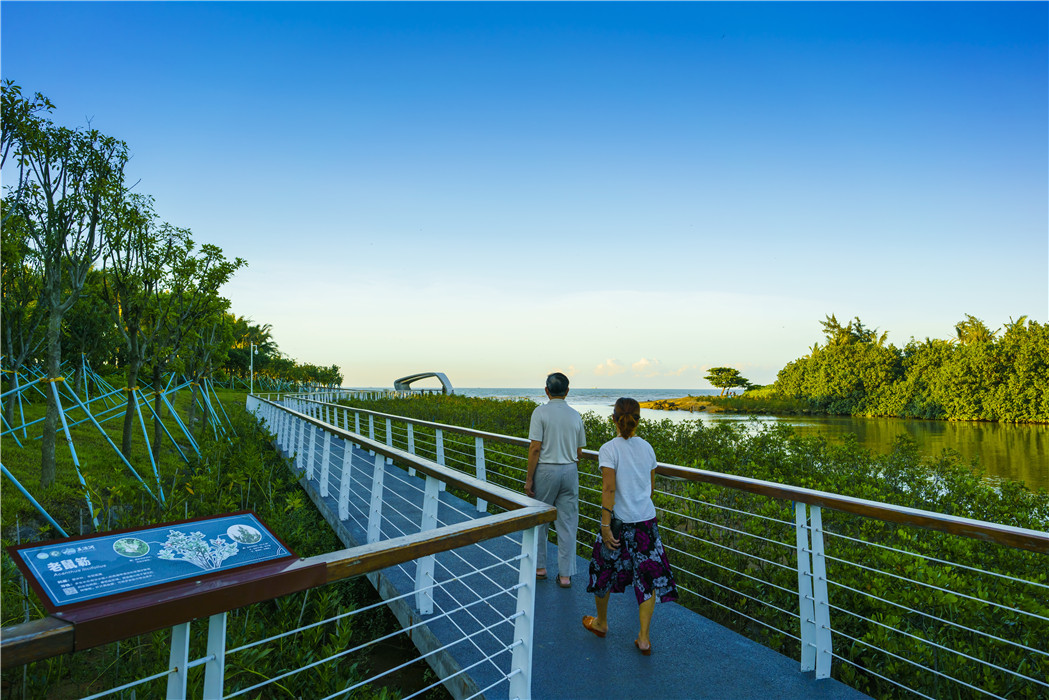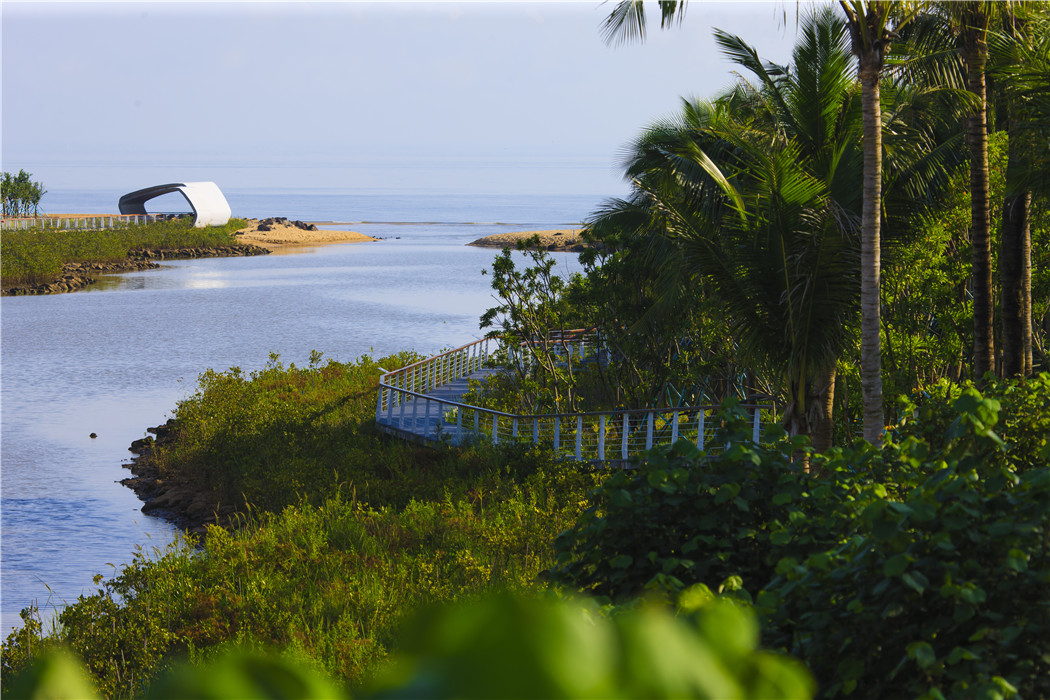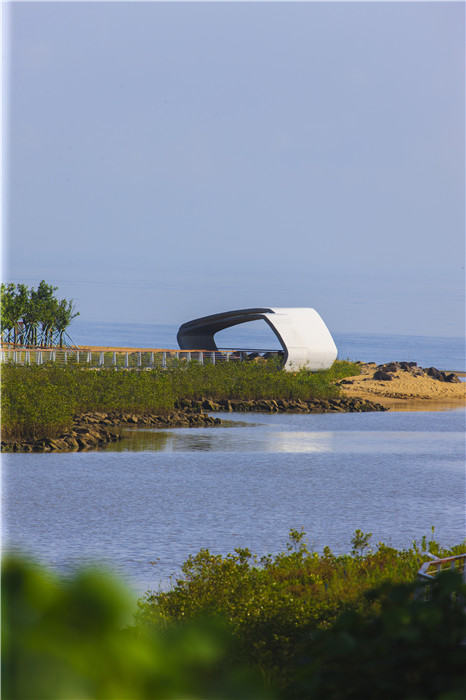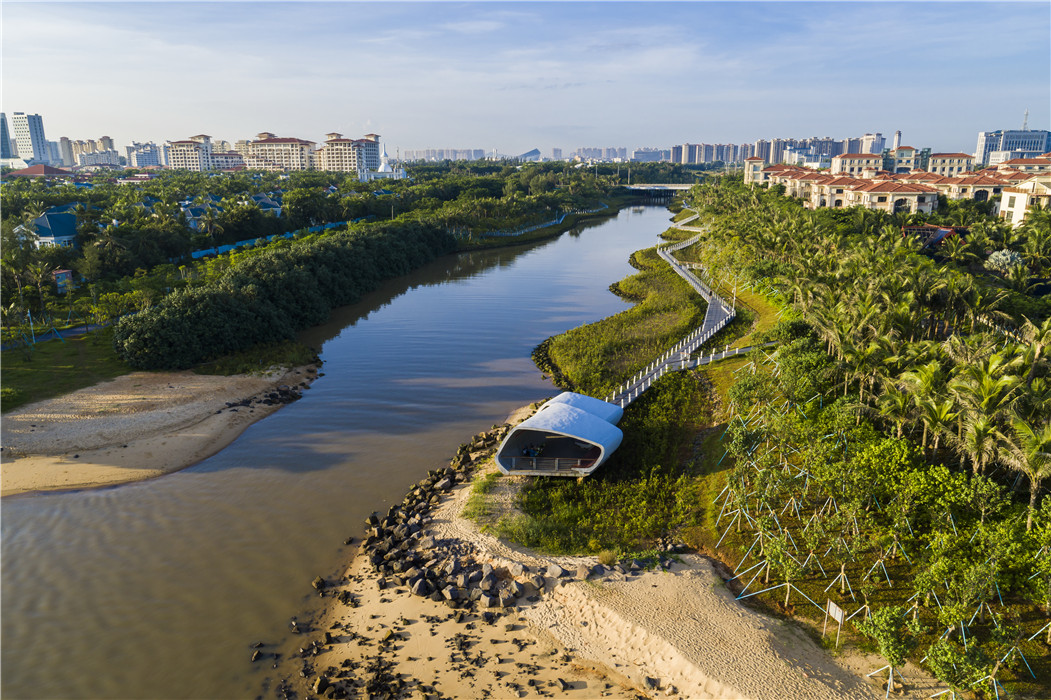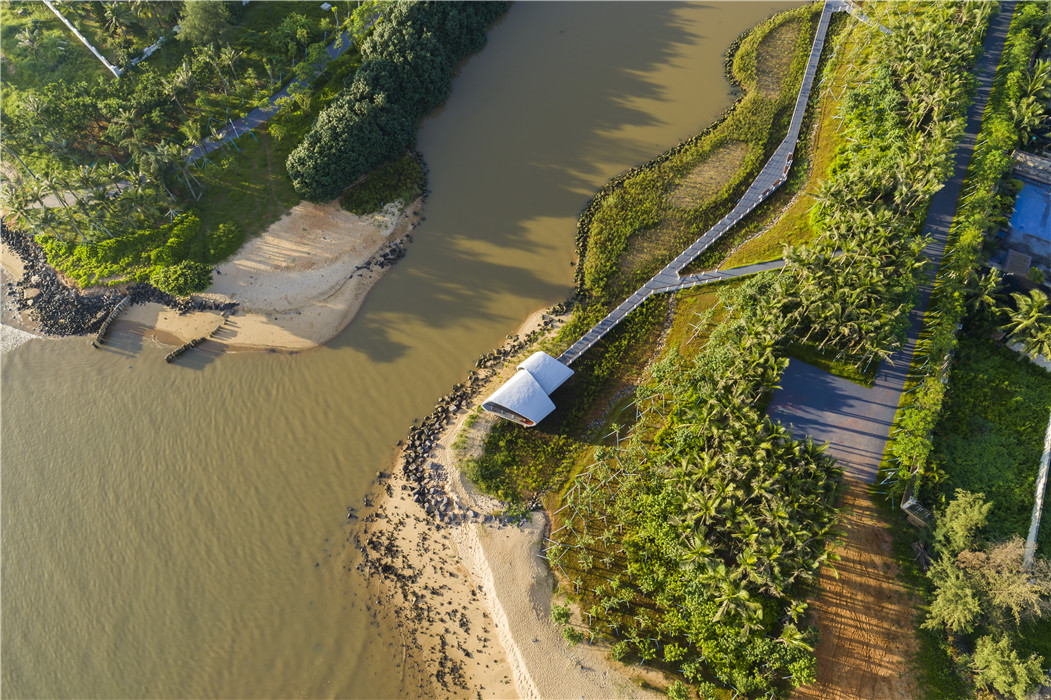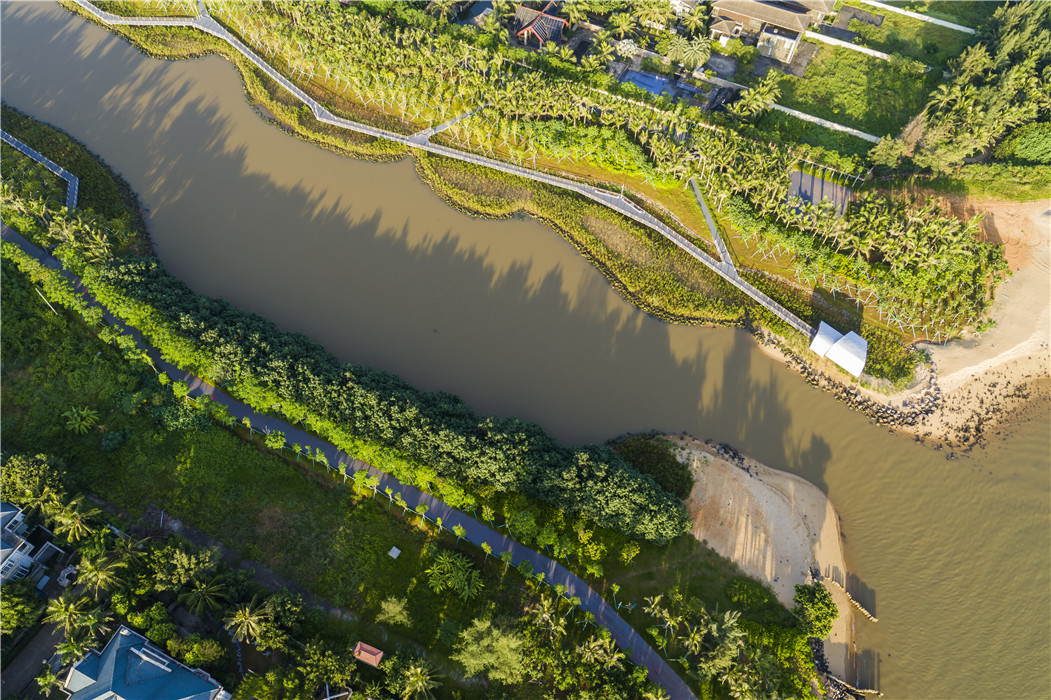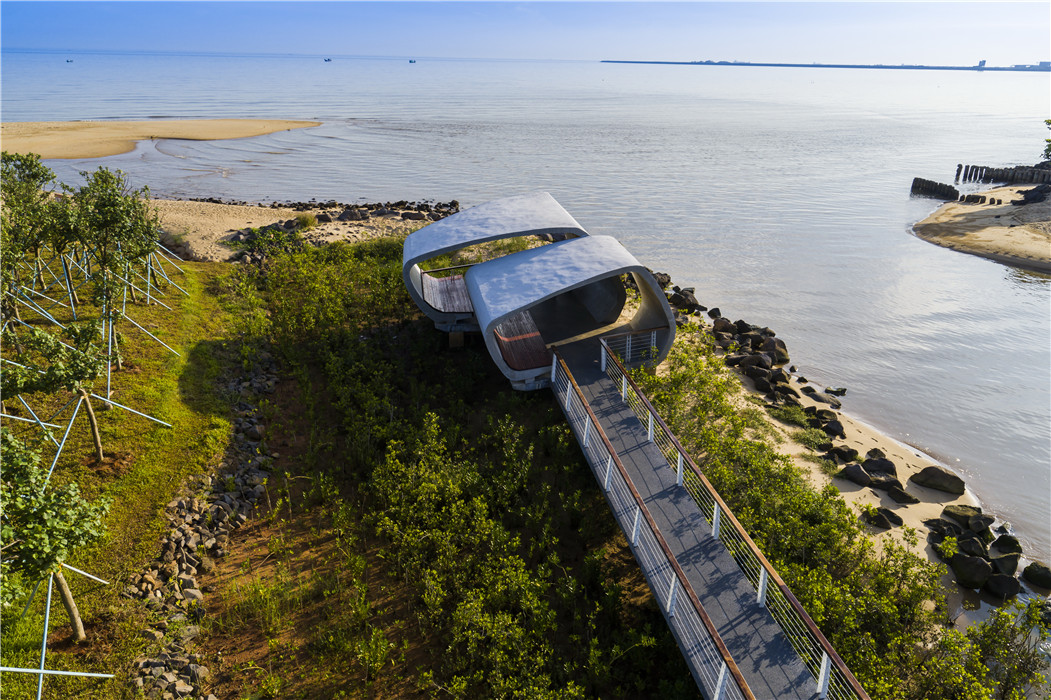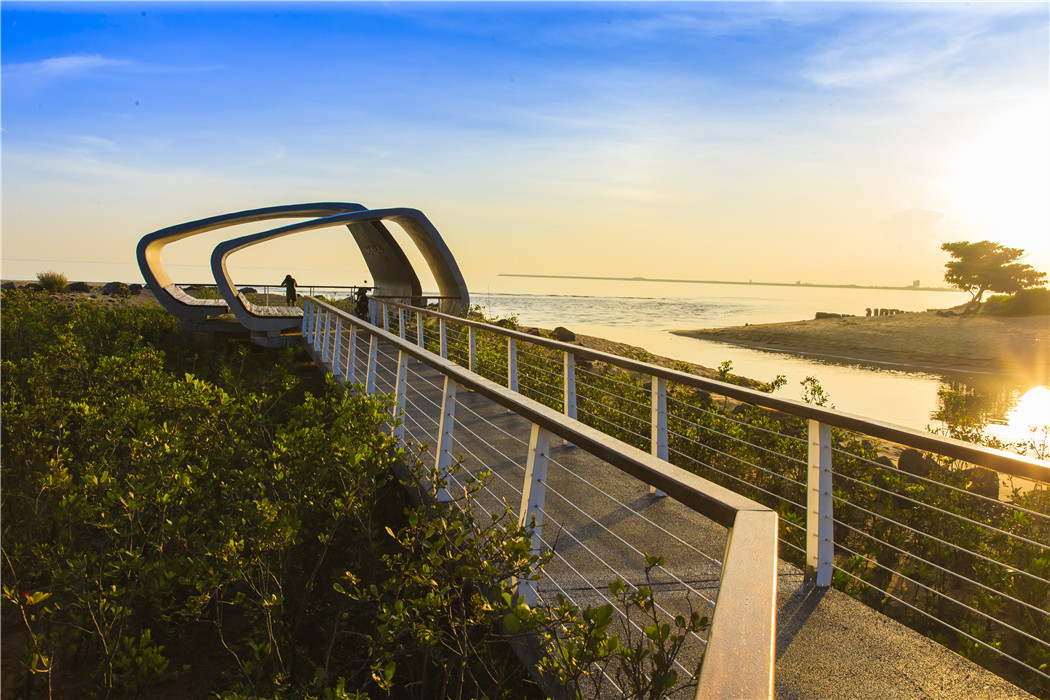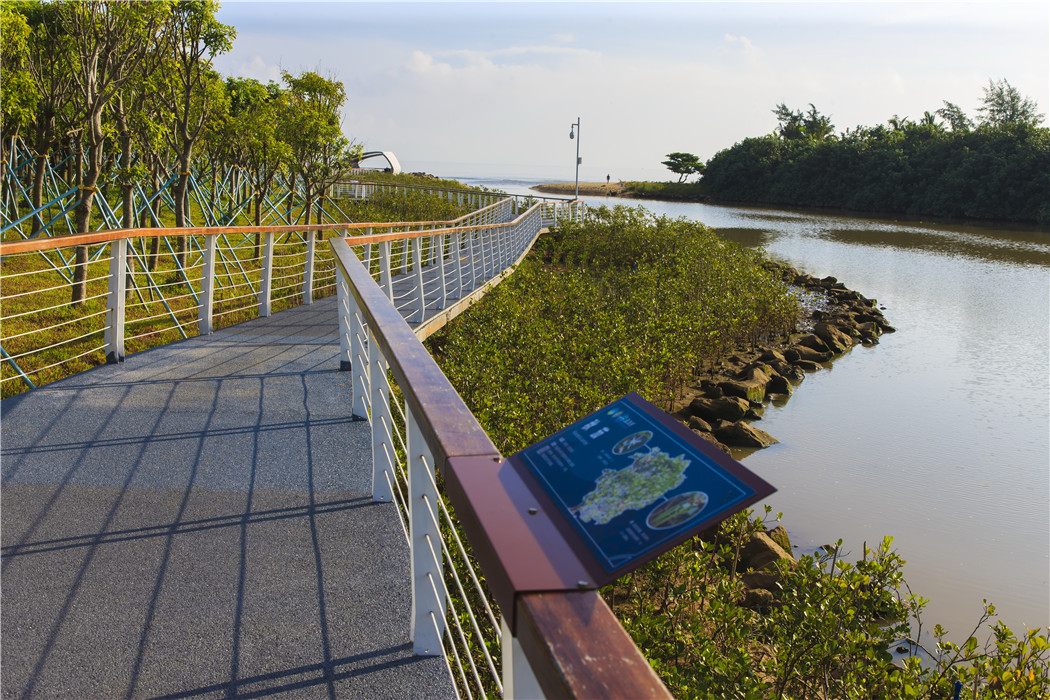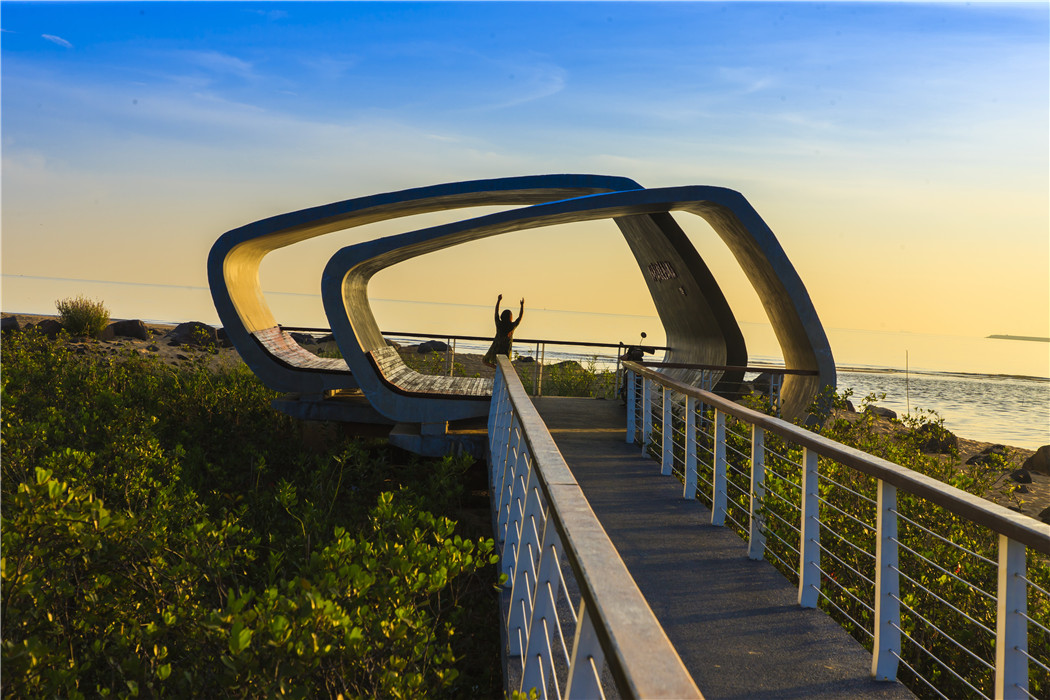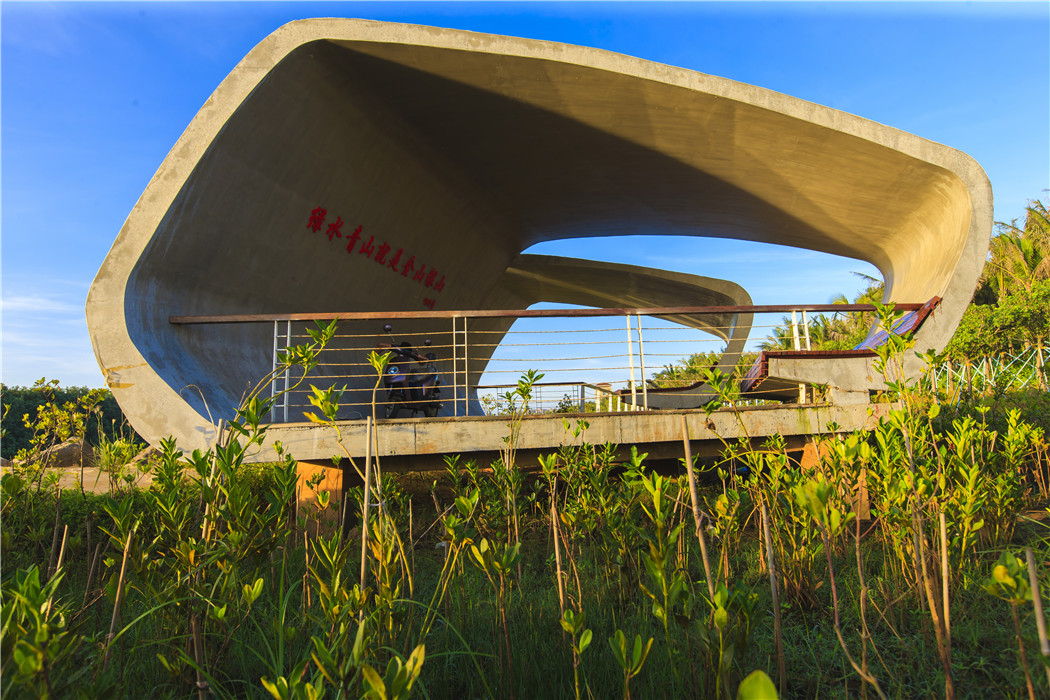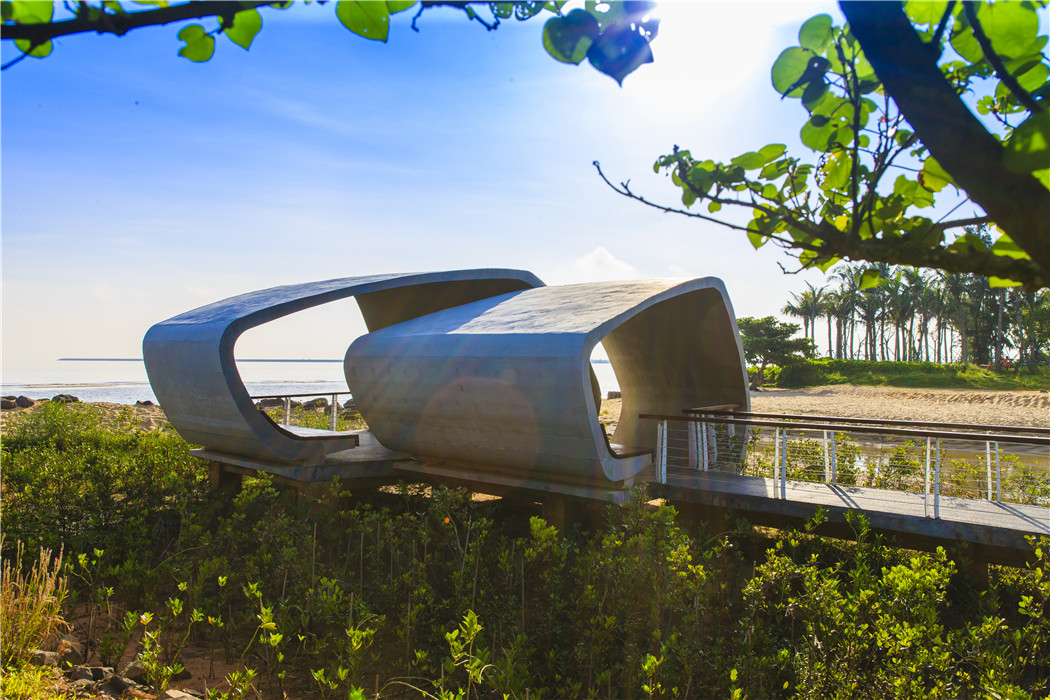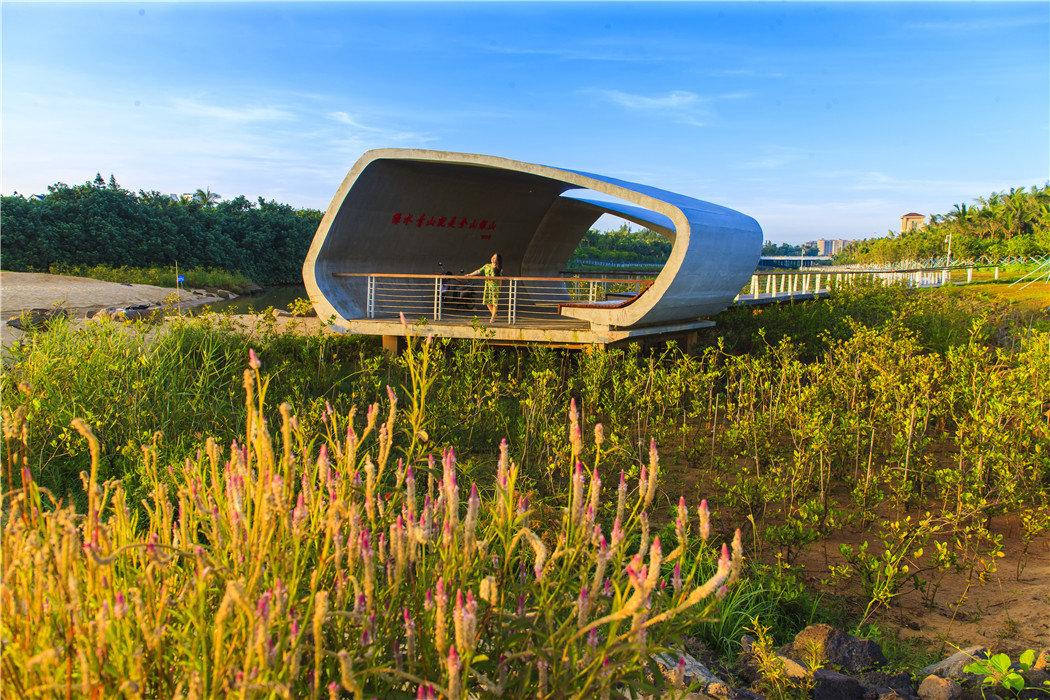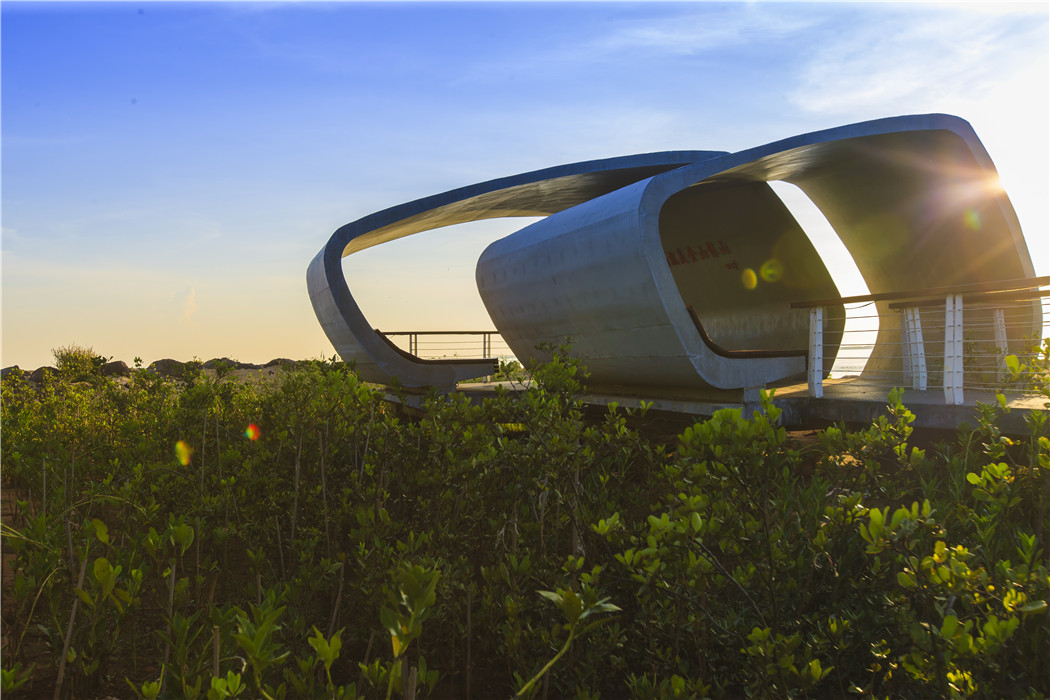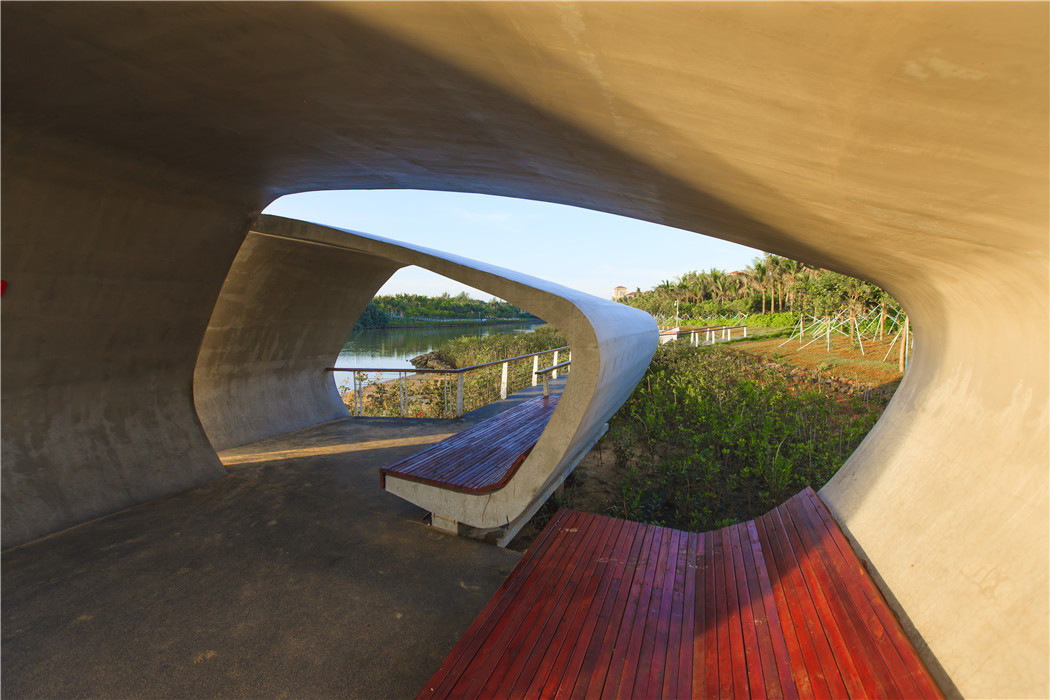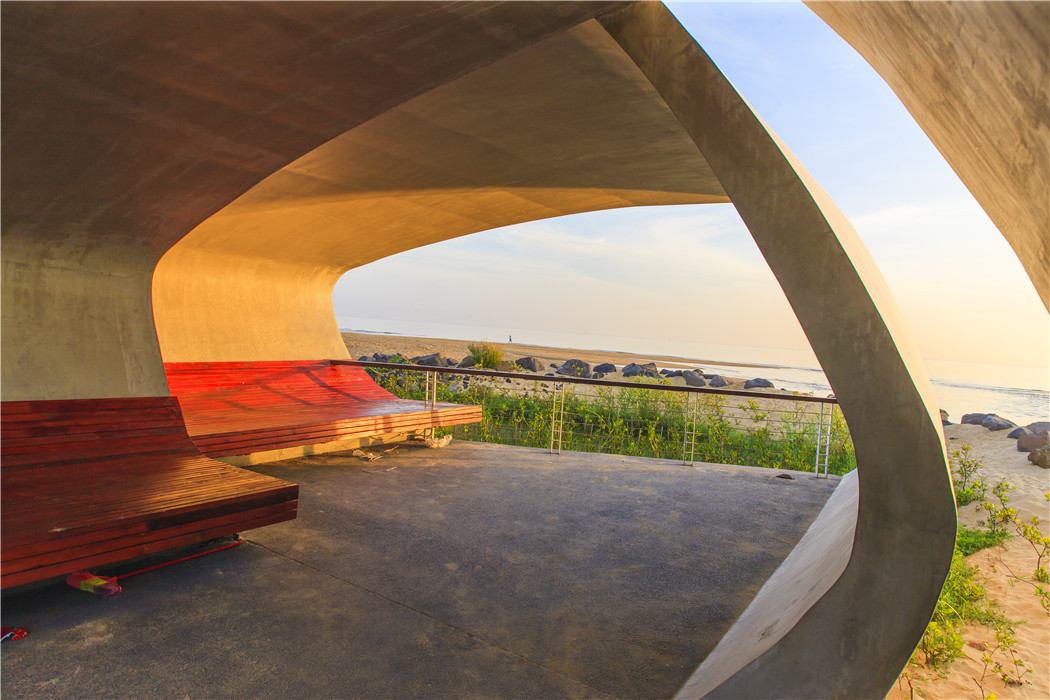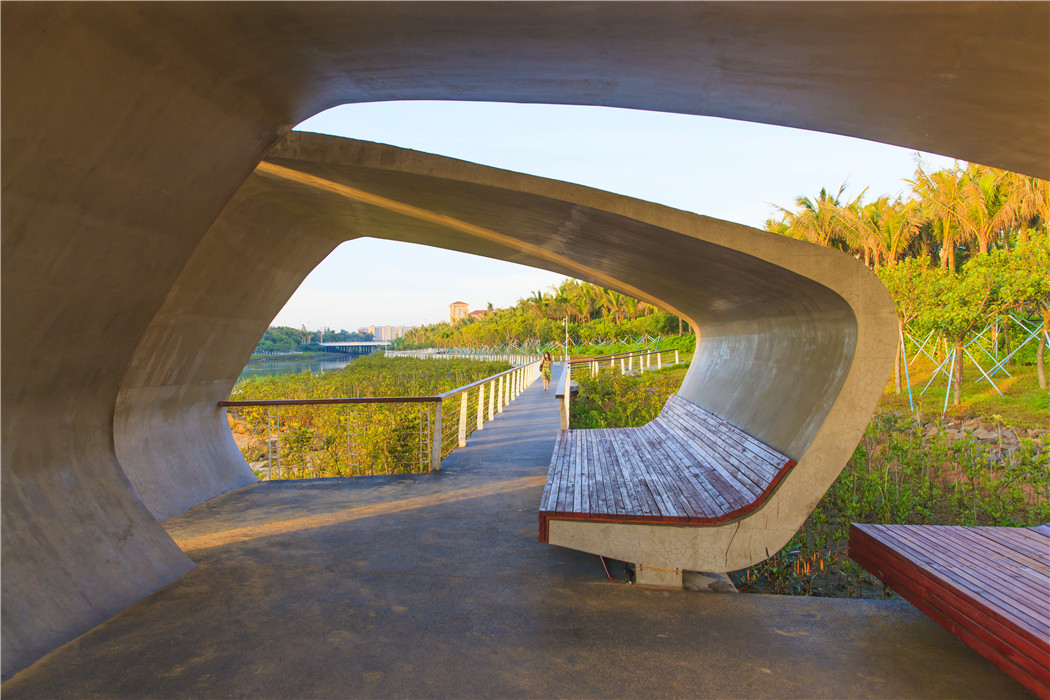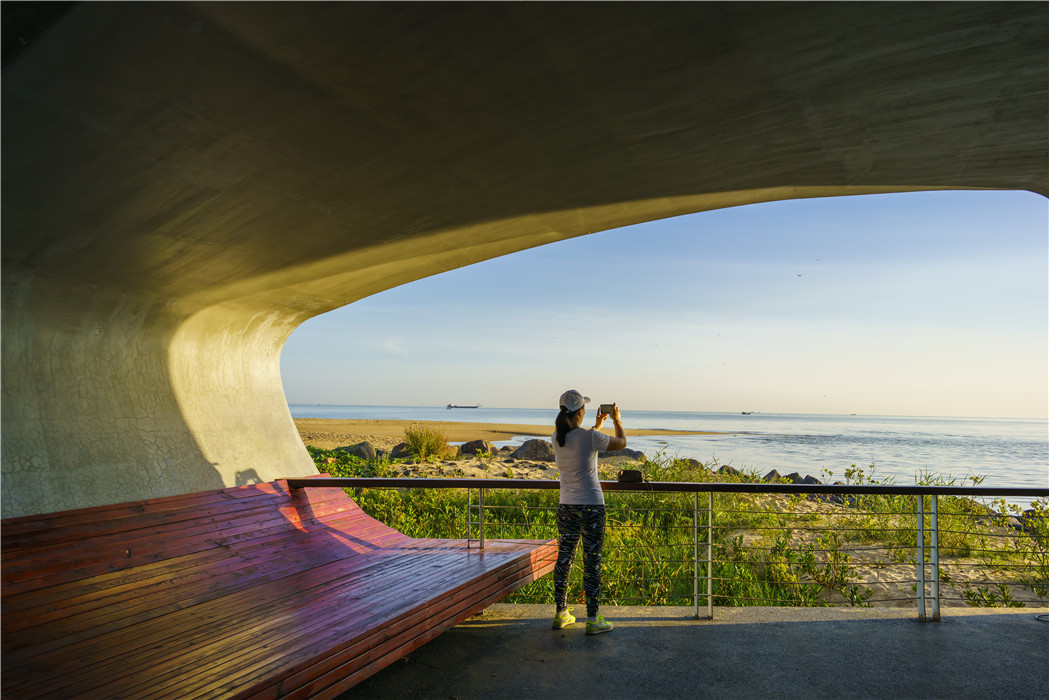Haikou Wuyuan River Ecological Restoration
Project Information
- Project Location:
- China Haikou, Hainan
- Project Scale:
- 6.2 Hectares
- Design Time:
- December 2016
- Build Time:
- December 2017
- Client:
- China Water Resources Pearl River Planning Surveying & Designing Co.,Ltd.
Project Profile
1. Project Statement
Transforming a channelized polluted river into a clear-water, green-banked national wetland park. The Wuyuan River Ecological Restoration Project in Haikou City integrates comprehensive ecological restoration of the river, mangrove habitat creation, and low-maintenance landscape facilities to convert a heavily polluted, ecologically damaged urban river into a scenic, biodiversity-rich ecological wetland park loved by residents.
2. Objective and Challenge
Wuyuan River is located in the northern coastal area of Changxiu District, Haikou City, Hainan Province, flowing from south to north into the Qiongzhou Strait. The river is 12.6 km long, with a 0.5 km demonstration section in Phase I. Located within the planned International Horticultural Expo Park, it is a future key tourist attraction in Haikou.
With regional development and rising environmental awareness among Haikou residents, ecological issues have become increasingly prominent: the hardened riverbanks have damaged the river's ecosystem, reducing biodiversity; the river's water quality is severely polluted, with excessive fecal coliforms and ammonia nitrogen; and mangrove habitats have been nearly destroyed, with significant degradation of intertidal zones. Simultaneously, the growing demand from local residents for public green spaces and recreational areas presents a core challenge: how to restore the ecological landscape of the Wuyuan River and provide a riverside green space for residents' leisure activities.
3. Design Strategy
a. Comprehensive River Ecological Restoration
A healthy, breathing river is the foundation of river restoration. The initial design phase involves comprehensive ecological restoration of the Wuyuan River: removing hardened embankments, ecologically transforming the riverbanks; creating diverse habitats by leveraging the natural topography to form terraces, slopes, ponds, shallow beaches, and sandbars, providing habitats for various flora and fauna; improving water quality by intercepting sewage pipes and restoring water sources. Enhancing ecological value, landscape effects, and functionality is based on overall ecological health.
b. High-Ecological-Value Mangrove Habitat Creation
The site features large intertidal areas with significant water level fluctuations and high salinity, unsuitable for ordinary plants but ideal for salt-tolerant, water-resistant, typhoon-resistant mangroves. Mangroves are biodiversity havens, praised as "root labyrinths, natural sewage treatment plants, and marine life paradises."
Design involves different mangrove planting modes based on tidal conditions and species habits: mixed pioneer trees in erosion-prone areas with steep slopes; mangrove habitats with high ecological and aesthetic value in flat, spacious areas; and semi-mangrove planting in higher, less frequently flooded areas. The restoration of mangrove habitats also emphasizes creating habitats for intertidal animals, attracting crabs, herons, and other wildlife post-construction.
c. Low-Impact Citizen Recreational Space Integration
Located within the International Horticultural Expo Park, the project area is a key tourist attraction in Haikou. Considering residents' recreational needs, low-impact citizen leisure spaces are integrated without harming the environment. A continuous, lightweight elevated boardwalk connects different habitats and landscapes, providing recreation and educational experiences.
d. Low-Maintenance Landscape Structures Design
With ample sunlight, frequent rainfall, and strong coastal winds, functional structures providing shade, rain shelter, and wind guidance are necessary for a good visitor experience. To ensure durability and reduce maintenance, structures are made of fair-faced concrete, modular for cost-effective construction, and designed as continuous curved surfaces integrating structure and function. Hidden drainage, lighting, and combined interfaces enhance functionality and aesthetics.
4. Conclusion
Upon completion, the Wuyuan River Ecological Restoration Project has become a beautiful riverside ecological corridor and a recreational area for residents.
